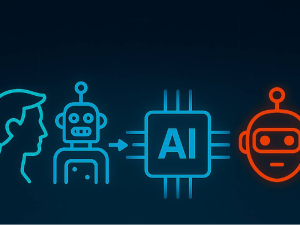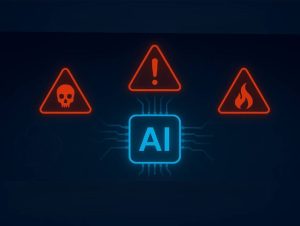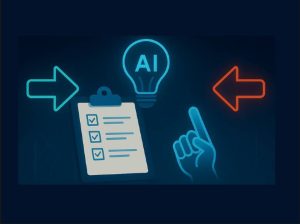You’ve probably heard it before: “You need clean data to do AI,” or “You must spend a lot of time cleaning your data before deploying an AI solution.”
In the era of Generative AI (GenAI), we believe it’s time to challenge that assumption and here is why:
- Before GenAI: When building AI models from scratch—especially deep learning models—clean, structured data was essential.
- Even with transfer learning: Fine-tuning pre-trained models still required high-quality, domain-specific data.
- With GenAI: Things are different. No one is training large language models (LLMs) from scratch anymore, and fine-tuning is rarely necessary—except perhaps to adjust the model’s tone or behaviour.
In fact, we argue the opposite: GenAI can help harmonize your data, not the other way around.
The Real Success Factor: Data Access, Not Data Perfection
We believe the key to successful GenAI implementation lies in access to diverse data sources across the enterprise—not in perfecting that data beforehand.
Multimodal GenAI models based on the Transformer architecture are rapidly replacing traditional and deep learning models across industries. Why?
- Attention mechanisms allow better correlation and contextual understanding of input data.
- Built-in multimodal knowledge enables more accurate and reasoned outputs.
These models offer a shortcut to value by eliminating the need to build AI systems from the ground up.
Training Is No Longer the Bottleneck
Training large models from scratch is now cost- and infrastructure-prohibitive for most organizations—even for smaller models with 3–7 billion parameters. As a result, the traditional argument for needing vast amounts of clean data no longer holds.
Fine-tuning still exists, but it’s different. Today, it’s typically done using LoRA or QLoRA, which train a small subset of parameters to adjust the model’s tone or behaviour—not its core knowledge.
Because of this, the data required for fine-tuning is:
• Much smaller in volume
• Often synthetic
• Frequently generated and curated using GenAI itself (via techniques like DPO)
Agentic AI: A Human-Like Approach to Imperfect Data
In real-world business environments, employees routinely work with incomplete or messy data—missing order histories, incorrect shipping addresses, and so on. They rely on experience, context, and documentation to make decisions and complete tasks.
Agentic AI, powered by GenAI, can be designed to behave similarly. It can reason through imperfect data, apply context, and execute processes effectively—just like a human would.
Just as you wouldn’t cleanse your entire enterprise data estate every time you hire a new employee, you don’t need to do so before deploying Agentic AI.
From Cleansing to Harmonisation
With the right tools, Agentic AI can actually harmonise your data—validating, correlating, and enriching it across systems. This includes everything from flat files to SQL and NoSQL databases.
Think of it as replacing a team of data analysts with an intelligent, always-on assistant that continuously improves your data quality as part of its operational role.
The Bottom Line
In the GenAI era, the critical success factor is no longer data cleansing—it’s data access and availability, combined with the right Agentic AI solution.
Our GenAI-focused True range of solutions—especially TrueAGENT and TrueRAG—have shaped our thinking and proven this approach in real-world deployments.
TrueAGENT, guided by the right prompts and ground in truth by TrueRAG, can significantly reduce the effort in cleaning your existing corporate data, whilst providing business process automation at the same time – pretty much the same way an experienced human employee would be able to!
If you’re exploring Agentic AI to transform your business operations, we’d love to help. Contact us today at ai-on-cloud.com for a free proof-of-concept (PoC) and discover how we can help you unlock new possibilities for your organisation.





